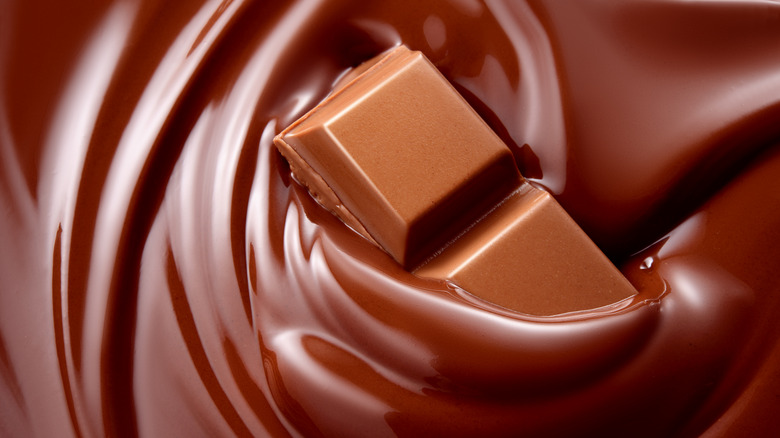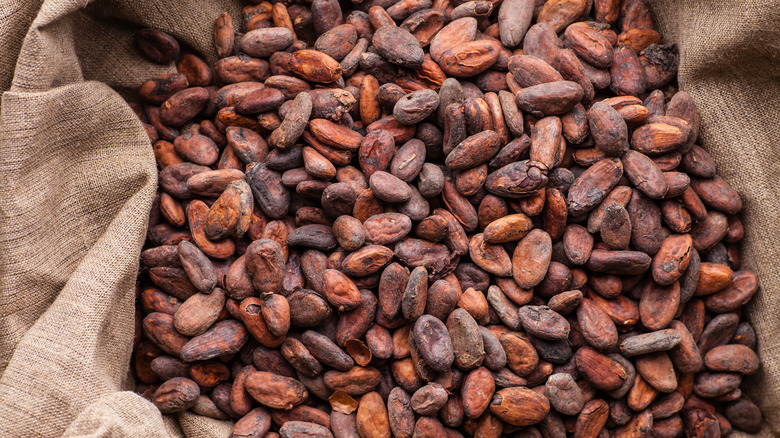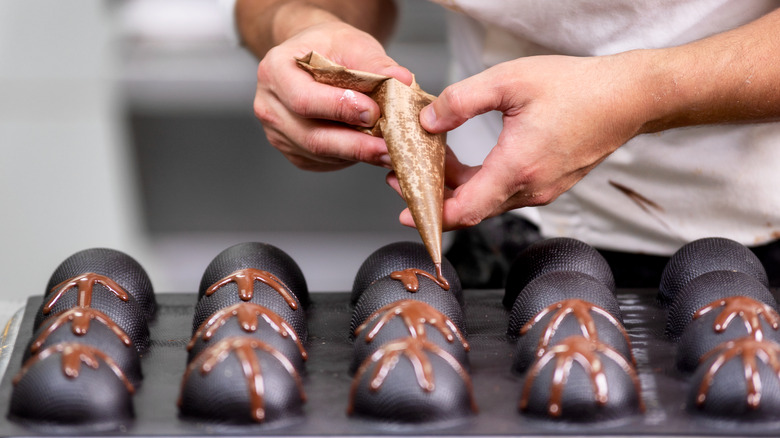Here's Where Milk Chocolate Was Actually Invented
Unless you've been living under a rock for pretty much your entire life, you've probably tasted a piece of chocolate. And while there are some people out there who don't like chocolate — they do exist — they are also in the minority. Chocolate is one of the most popular sweets in the world, with an average global consumption reaching a whopping 16 billion pounds of chocolate per year, according to Dame Cacao. Americans are certainly no exception, spending about $144.90 annually to get their chocolate fix, and eating just under 20 pounds of chocolate per year.
Americans also largely prefer milk chocolate over any other type of cacao. According to a 2021 YouGov survey, 49% of Americans said they would choose milk chocolate over any other type, beating out dark, which captured 34% of the vote, and white chocolate, which is the least popular, with just 11% of people selecting the sweetest option as their favorite. But how exactly did the most popular chocolate variety come to be? It turns out that while chocolate has been around in some form for thousands of years, milk chocolate was a relatively recent discovery — and it didn't just happen overnight.
Chocolate comes from the Americas
What we think of as chocolate is a by-product of the cacao tree, which naturally grows in Central and South America. The fruit, or pods, of the cacao tree, are harvested for their beans, which are then dried, roasted, and turned into cacao beans, the main ingredient in chocolate, according to History. While exactly when or who was the first person to cultivate cacao beans is a little hazy, humans have likely been consuming chocolate since at least as far back as 1500 B.C. Early chocolate, however, wasn't consumed in the form of Snickers and Hershey bars as we think of it today. The Olmec, Mayan, and Aztec civilizations who first cultivated cacao consumed it in the form of a ceremonial cacao drink, often with other additives like honey or chili peppers, per History.
Chocolate made its way from the Americas to Europe by way of Spain in the 1500s, when explorers encountered the rich treat on their travels and brought cacao beans back home with them. Soon, the Spanish court was enthralled with the stuff, so they began importing cacao beans from the Americas and making their own versions of hot chocolate, adding their own flavors like cinnamon and cane sugar. Predictably, this popular new treat didn't stay in Spain for long. Soon, wealthy people from other countries across Europe were also clamoring for chocolate.
Milk chocolate was invented in Switzerland
While the Americas may be chocolate's homeland, it underwent some significant changes once it arrived in Europe. In fact, it is the birthplace of what we might now consider modern chocolate. At first, cacao beans were a lot of work to process, meaning chocolate was very pricey and therefore typically reserved only for the wealthy. However, in 1828, a Dutch chemist named Coenraad van Houten invented a much more simple way to process cacao beans by treating them with alkaline salts and turning them into a powder, according to History.
But while the Dutch might have made chocolate more accessible to the masses, Switzerland gets credit for creating the most popular type of chocolate we eat today. It was a Swiss chocolatier by the name of Daniel Peter who came up with the idea of adding dehydrated milk to chocolate to create — you guessed it — milk chocolate, according to Peter's Chocolate. This simple addition made the chocolate smooth, silky, and delicious, not to mention more shelf stable. In 1887, Peter began selling his Chocolat au lait Gala Peter to the public, and it was a hit. In the early 1900s, Peter's chocolate made it to America after a traveling businessman fell in love with a Peter's Gala Bar and bought the rights to sell the chocolate overseas. By 1917, a milk chocolate factory in Fulton, New York, was manufacturing the sweet treat for the American public, and the rest is history.


